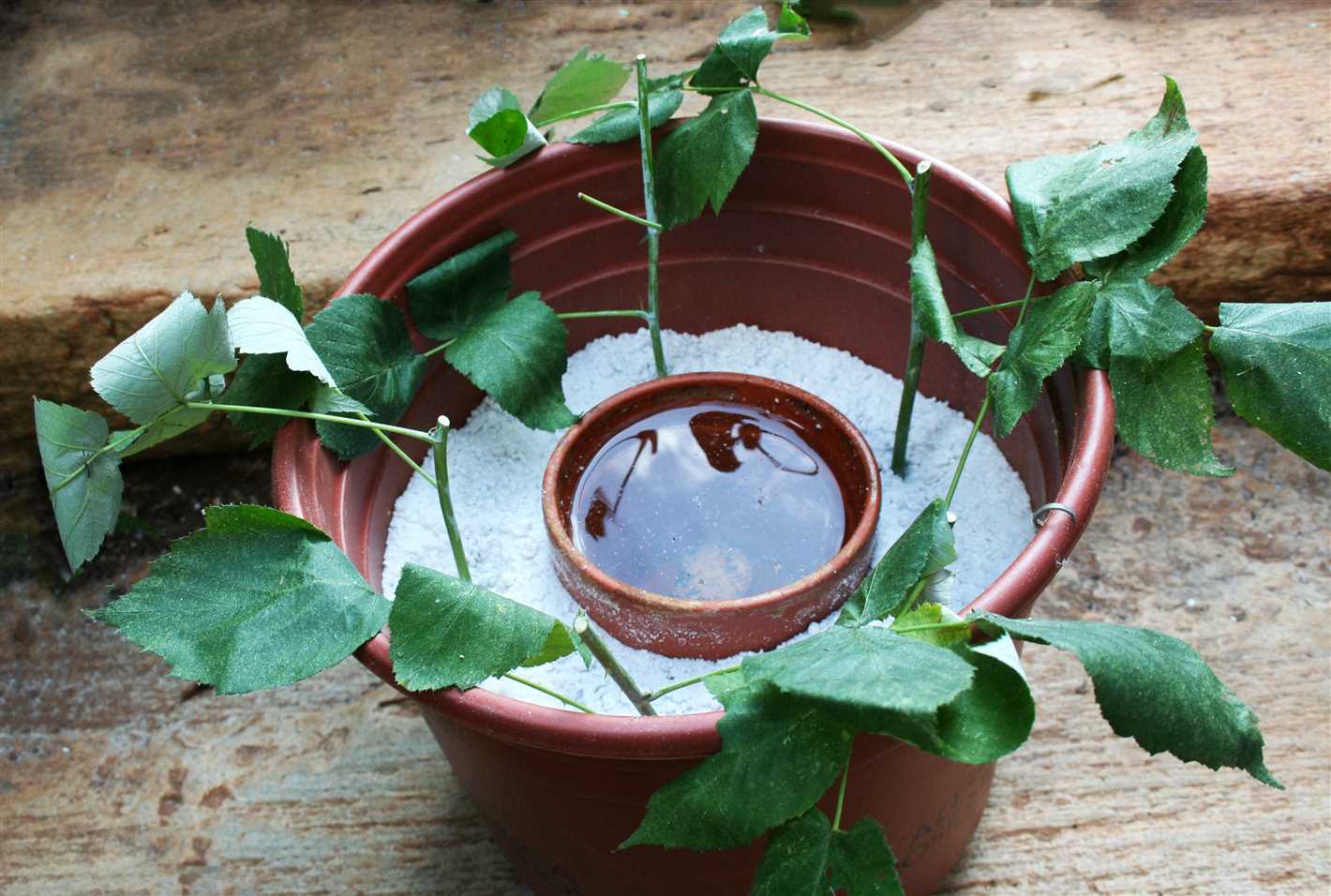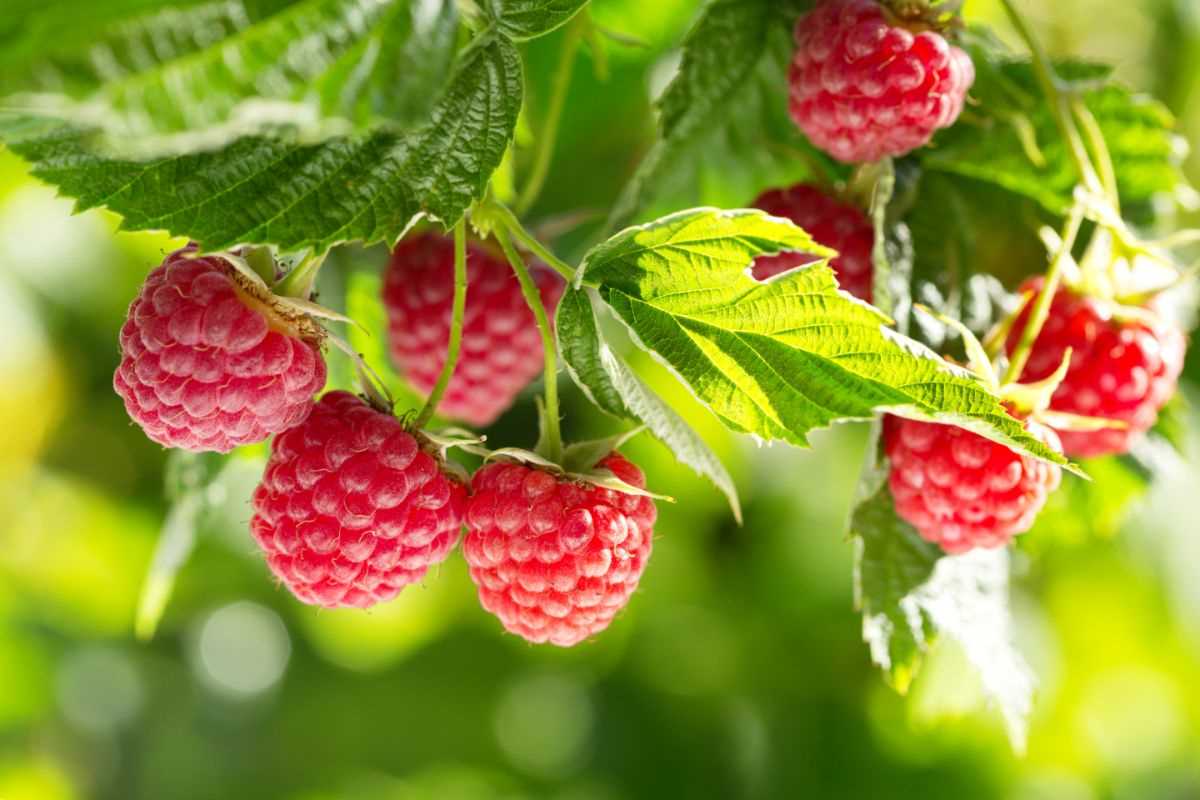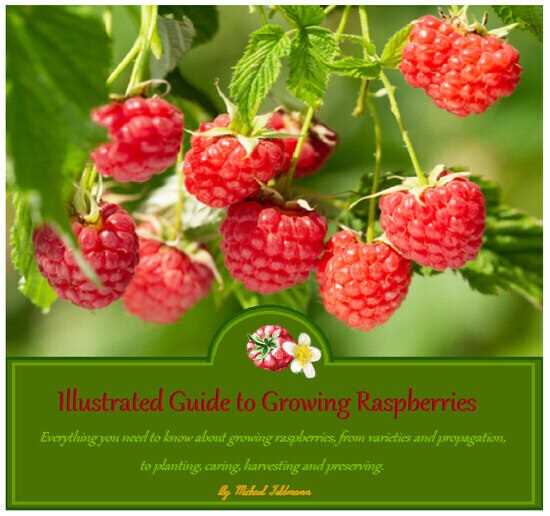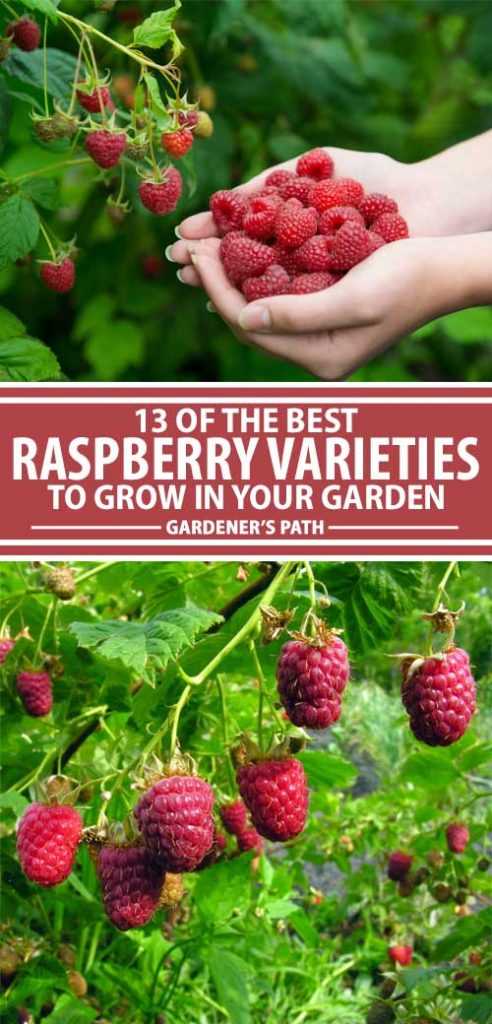- Raspberry Basics: Everything You Need to Know Before Getting Started
- 1. Introduction
- 2. Raspberry Varieties
- 3. Planting and Growing
- 4. Propagation
- 5. Common Pests and Diseases
- 6. Harvesting and Using Raspberries
- Conclusion
- Choosing the Right Raspberry Varieties for Your Garden
- Climate
- Growing Space
- Taste and Use
- Disease Resistance
- Availability
- Step-by-Step Guide: How to Successfully Grow Raspberries
- 1. Choose the Right Variety
- 2. Prepare the Soil
- 3. Planting
- 4. Watering
- 5. Pruning
- 6. Fertilizing
- 7. Mulching
- 8. Pest and Disease Control
- 9. Harvesting
- 10. Enjoy Your Raspberries
- The Importance of Proper Raspberry Propagation Techniques
- 1. Maintaining Genetic Diversity
- 2. Preserving Desirable Traits
- 3. Cost-effectiveness
- 4. Expansion of Raspberry Plantings
- 5. Ensuring Plant Health
- 6. Renewal of Aging Plants
- Conclusion
- Common Raspberry Pests and Diseases: How to Identify and Control Them
- Pests
- Diseases
- Preventive Measures
- Maximizing Raspberry Harvest: Tips for Optimal Fruit Production
- 1. Choose the right variety:
- 2. Provide adequate sunlight:
- 3. Ensure well-drained soil:
- 4. Prune and train your plants:
- 5. Water regularly:
- 6. Implement proper pest and disease control:
- 7. Harvest at the right time:
- 8. Preserve or enjoy fresh:
- The Best Ways to Enjoy and Preserve Fresh Raspberries
- 1. Eating Fresh
- 2. Adding to Salads
- 3. Making Smoothies
- 4. Baking
- 5. Preserving
- Frequently Asked Questions About Raspberries and Expert Answers
- 1. What is the best time to plant raspberry plants?
- 2. How much sunlight do raspberry plants need?
- 3. How often should I water my raspberry plants?
- 4. How do I protect my raspberry plants from pests?
- 5. When is the right time to harvest raspberries?
- 6. Can I grow raspberries in containers?
- 7. How do I propagate raspberry plants?
- 8. Which raspberry varieties are best for my region?
- 9. How do I prune raspberry plants?
- 10. How long do raspberry plants typically live?
- Question-answer:
- What are some tips for successfully growing raspberries?
- When is the best time to propagate raspberries?
- What are some popular raspberry varieties?
- Can raspberries be grown in containers?
- What are the benefits of growing raspberries?
- How long does it take for raspberries to bear fruit?
- Video: How to Propagate Raspberries the Easy Way [Turning $15 into $75 in 7 Minutes]

Raspberries are delicious and nutritious fruits that can be easily grown in your own backyard. Not only will you be able to enjoy fresh berries all summer long, but you will also have the opportunity to propagate new plants and explore different varieties. This article will provide you with a comprehensive guide on how to grow raspberries successfully, tips on propagating them, and also highlight some of the best raspberry varieties available.
To start growing raspberries, you will need to choose a suitable location in your garden. Raspberries prefer full sun and well-draining soil, so find an area that receives at least six hours of direct sunlight each day. It is also important to ensure that the soil is rich in organic matter and has a slightly acidic pH level. If your soil is too alkaline, consider adding compost or peat moss to improve its fertility and acidity.
Once you have prepared the soil, you can then plant your raspberry bushes. Raspberry plants should be spaced about 2-3 feet apart to allow for proper air circulation. Dig a hole that is wide and deep enough to accommodate the roots of the plant, and place the raspberry bush in the hole, making sure that the crown of the plant is level with the surrounding soil. Fill the hole with soil, gently firming it around the roots, and water the plant thoroughly.
To propagate raspberries, you can either take stem cuttings or divide the plants. Taking stem cuttings is a simple and effective method. Select healthy stems from your existing plants and cut them to a length of about 6 inches. Remove the lower leaves and dip the cut end in rooting hormone powder. Plant the cutting in a pot filled with a mixture of sand and peat moss, and keep it in a warm and humid environment until roots form.
There are many different raspberry varieties to choose from, each with its own unique characteristics. Some popular varieties include ‘Heritage,’ which is known for its high yield and excellent flavor, and ‘Autumn Bliss,’ which produces large berries in late summer and early fall. ‘Tulameen’ is another variety that is highly regarded for its sweetness and disease resistance. Do some research to find out which varieties thrive best in your growing region and select accordingly.
In conclusion, growing raspberries can be a rewarding experience that allows you to enjoy fresh berries and experiment with different varieties. By following the proper planting techniques and taking advantage of propagation methods, you can successfully grow your own raspberries and discover the best varieties for your garden. So why not give it a try and start your raspberry adventure today?
Raspberry Basics: Everything You Need to Know Before Getting Started
1. Introduction
Welcome to the world of raspberry gardening! Before you start growing raspberries, it’s important to understand the basics of this fruit and how to successfully grow and propagate them. This article will guide you through everything you need to know to get started with growing raspberries.
2. Raspberry Varieties
Raspberries come in several different varieties, each with its own unique characteristics. The most common types of raspberries include red raspberries, black raspberries, purple raspberries, and yellow raspberries. Before deciding which variety to grow, consider factors such as taste, disease resistance, and suitability to your climate.
- Red Raspberries: These are the most popular and widely available variety. They have a sweet-tart flavor and come in both summer-bearing and everbearing types.
- Black Raspberries: Also known as black caps, they are smaller and sweeter than red raspberries. They are usually self-fertile and have a unique flavor.
- Purple Raspberries: These raspberries are a cross between red and black raspberries. They have a unique purple color and a milder flavor compared to red raspberries.
- Yellow Raspberries: These raspberries have a sweet, mild flavor and are less tart than red raspberries. They are usually everbearing and produce fruit throughout the summer.
3. Planting and Growing
Raspberries can be grown in various climates but thrive in well-drained soil with a pH between 5.5 and 6.5. They prefer full sun and should be planted in a location that receives at least 6 hours of sunlight per day. When planting raspberries, ensure proper spacing between plants to allow for good air circulation and prevent the spread of diseases.
Raspberries are typically planted as bare-root plants in early spring or fall. They should be planted at the same depth they were growing in the nursery. After planting, provide regular water to keep the soil evenly moist.
It’s important to establish a trellis system for your raspberry plants to support their growth. This helps prevent the canes from sprawling and makes harvesting easier. Pruning is also essential for maintaining raspberry plants and promoting fruit production. Remove old canes after they have fruited and thin out new canes to promote healthier growth.
4. Propagation
Raspberries can be propagated through several methods, such as division, layering, and stem cuttings. Division is the most common method, where you separate the root mass into smaller sections and replant them. Layering involves bending a cane to the ground and burying a section of it, allowing it to develop roots and then cutting it away from the parent plant. Stem cuttings involve taking a section of a cane and planting it in a rooting medium to develop roots before transplanting.
5. Common Pests and Diseases
Like any plant, raspberries are susceptible to pests and diseases. Some common pests that can affect raspberries include aphids, spider mites, and fruit flies. Diseases such as raspberry leaf spot, powdery mildew, and cane blight can also damage raspberry plants. Regular inspection of your plants and early intervention can help prevent and control these issues.
6. Harvesting and Using Raspberries
Raspberries are typically ready for harvest in the summer, depending on the variety. They should be picked when fully ripe, as they do not continue to ripen after being picked. Gently pluck the berries from the plant to avoid damaging them.
Raspberries can be eaten fresh, used in desserts such as pies and tarts, or preserved through freezing, canning, or making jams and jellies. Enjoy the delicious flavors and versatility of raspberries in your culinary creations!
Conclusion
Now that you know the basics of growing raspberries, you’re ready to embark on your raspberry gardening journey. Remember to choose the right variety, provide proper care and maintenance, and enjoy the bountiful harvest of these tasty berries. Happy raspberry gardening!
Choosing the Right Raspberry Varieties for Your Garden
Growing raspberries in your garden is a rewarding and delicious experience. However, with so many different varieties to choose from, it can be overwhelming to know which ones will thrive in your specific garden conditions. Here are some factors to consider when selecting the right raspberry varieties for your garden.
Climate
The first thing to consider is your climate. Raspberries come in two main types: summer-bearing and everbearing. Summer-bearing raspberries produce fruit once a year in the summer, while everbearing raspberries produce fruit twice a year, once in summer and once in fall. Choose the variety that suits your climate best. For example, if you live in a region with cold winters, you may want to choose a summer-bearing variety.
Growing Space
Consider the available growing space in your garden. Raspberries can be grown in containers, raised beds, or directly planted in the ground. Some varieties, like the dwarf or patio raspberries, are perfect for containers and small spaces. Others, like the sprawling varieties, will need more space to spread out. Make sure to choose a variety that fits well with your available space.
Taste and Use
Think about the flavor and intended use of your raspberries. Some varieties are sweeter and more suitable for fresh eating, while others are more tart and better for cooking or making jams and jellies. Consider how you will be using your raspberries and choose a variety that matches your taste preferences and culinary needs.
Disease Resistance
Raspberries are susceptible to certain diseases and pests, including viruses and root rot. When choosing raspberry varieties, check for disease resistance. Look for varieties that are resistant to common raspberry diseases in your area. This will help ensure a healthy and productive raspberry patch in your garden.
Availability


Lastly, consider the availability of raspberry varieties in your area. Some varieties may be more readily available at local nurseries or online suppliers. Check with local garden centers or do some research online to find out which varieties are easily accessible to you. This will make it easier to find and purchase the raspberry plants you want for your garden.
By considering these factors, you can choose the right raspberry varieties for your garden and set yourself up for a successful and bountiful harvest. Whether you prefer summer-bearing or everbearing, sweet or tart raspberries, there’s a perfect variety out there waiting to be grown in your garden.
Step-by-Step Guide: How to Successfully Grow Raspberries
Are you interested in growing your own raspberries? Follow this step-by-step guide to learn how to successfully grow raspberries and enjoy a bountiful harvest.
1. Choose the Right Variety
There are many different varieties of raspberries, each with its own unique flavor and growth habit. Consider factors such as climate, soil conditions, and desired berry characteristics when selecting a variety.
2. Prepare the Soil
Raspberries prefer well-draining soil with a pH between 5.5 and 6.5. Clear the area of any weeds or grass and amend the soil with organic matter, such as compost or aged manure, to improve fertility and drainage.
3. Planting
Plant your raspberries in the early spring or late fall when the soil is cool and moist. Dig a hole wide and deep enough to accommodate the roots and place the plant in the hole, covering the roots with soil. Space the plants 2 to 3 feet apart in rows.
4. Watering
Keep the soil consistently moist but not waterlogged, especially during dry periods. Water deeply once or twice a week, providing at least 1 inch of water per week.
5. Pruning
Pruning is essential for maintaining healthy raspberry plants and maximizing fruit production. Remove any dead or diseased canes in early spring and thin out the remaining canes to about 6 per foot of row.
6. Fertilizing
Apply a balanced fertilizer, such as 10-10-10, in early spring before new growth appears. Follow the recommended application rates on the fertilizer package.
7. Mulching
Apply a layer of mulch around the base of the plants to help conserve moisture, suppress weeds, and regulate soil temperature. Use organic mulch, such as straw or wood chips, and replenish it as needed.
8. Pest and Disease Control
Monitor your raspberry plants regularly for signs of pests or diseases, such as aphids, Japanese beetles, or powdery mildew. Use organic methods, such as hand-picking insects or spraying a mixture of water and soap, to control pests.
9. Harvesting
Raspberries are ready to harvest when they are fully colored and easily detach from the plant. Gently pick the berries, being careful not to crush or damage them. Harvest every few days to ensure you pick the ripe ones before they go bad.
10. Enjoy Your Raspberries
Raspberries can be enjoyed fresh, used in desserts, or preserved by freezing or canning. Experiment with different recipes and savor the sweet, tangy flavor of your homegrown raspberries.
The Importance of Proper Raspberry Propagation Techniques


Raspberries are a popular fruit that can be grown in many regions and climates. Proper propagation techniques are essential for successful raspberry cultivation. By understanding and implementing these techniques, gardeners can ensure healthy plants and bountiful harvests.
1. Maintaining Genetic Diversity
Proper propagation techniques help maintain genetic diversity among raspberry plants. This is crucial for the long-term health and productivity of the plant population. Genetic diversity allows the plants to adapt to changing environmental conditions and resist diseases and pests.
2. Preserving Desirable Traits
Raspberry propagation techniques are employed to preserve and propagate desirable traits in raspberries. These desirable traits may include increased fruit size, improved flavor, or disease resistance. By selectively propagating raspberry plants with these traits, gardeners can ensure the production of high-quality, delicious fruits.
3. Cost-effectiveness
Proper raspberry propagation techniques can be cost-effective for gardeners. Instead of purchasing new raspberry plants each year, gardeners can propagate their existing plants, saving money in the long run. Additionally, propagating raspberries allows gardeners to share plants with friends and neighbors, fostering a sense of community and reducing overall costs.
4. Expansion of Raspberry Plantings
Effective propagation techniques enable gardeners to expand their raspberry plantings. By propagating plants from established stock, gardeners can rapidly increase their raspberry patch without the need to purchase additional plants. This expansion not only allows for larger harvests but also provides greater ornamental value and habitat for wildlife.
5. Ensuring Plant Health
Proper propagation techniques help ensure the health and vigor of raspberry plants. By carefully selecting and propagating healthy plant material, gardeners can reduce the risk of introducing diseases or pests. It is also important to follow proper sanitation practices during propagation to prevent the spread of pathogens.
6. Renewal of Aging Plants
As raspberry plants age, their productivity and vigor may decline. Propagation techniques such as replanting and layering can rejuvenate aging plants, helping to maintain a consistent crop yield. By renewing aging plants, gardeners can extend the productive lifespan of their raspberry patch.
Conclusion
Proper raspberry propagation techniques are essential for maintaining genetic diversity, preserving desirable traits, and ensuring the health and vigor of raspberry plants. These techniques can also be cost-effective and allow for the expansion of raspberry plantings. By employing these techniques, gardeners can enjoy a bountiful harvest of delicious raspberries for years to come.
Common Raspberry Pests and Diseases: How to Identify and Control Them
Pests
- Raspberry Aphids: These small insects suck the sap from raspberry plants, causing the leaves to curl and distort. To control aphids, spray the plants with insecticidal soap or use natural predators like ladybugs to eat them.
- Raspberry Fruitworms: Fruitworms lay eggs on the raspberry fruit, which then hatch into larvae that feed on the berries. You can control them by handpicking the affected fruit and disposing of it, or by applying an insecticidal spray.
- Raspberry Sawfly: The larvae of raspberry sawflies eat the leaves of raspberry plants, often skeletonizing them. To control sawflies, prune and destroy affected leaves, and use an insecticidal spray if necessary.
Diseases
- Gray Mold: Gray mold is a fungal disease that affects raspberries, causing a gray, velvety growth on the berries and stems. To control gray mold, remove infected plant material and apply a fungicide spray.
- Root Rot: Root rot is typically caused by waterlogged soil and affects the roots of raspberry plants, leading to stunted growth and wilting. Improve drainage and avoid overwatering to prevent root rot.
- Raspberry Leaf Spot: Leaf spot is a fungal disease that causes purple spots on raspberry leaves, eventually leading to defoliation and reduced fruit production. To control leaf spot, remove infected leaves and apply a fungicide spray.
Preventive Measures
- Ensure proper spacing between plants to promote good air circulation, which helps prevent fungal diseases.
- Mulch around the plants to suppress weed growth and maintain soil moisture levels.
- Regularly monitor your plants for pests and diseases, and take action at the first sign of trouble.
- Keep the area around your raspberry plants clean and free of debris to reduce the likelihood of pest and disease problems.
- Choose disease-resistant raspberry varieties when planting new raspberries.
Maximizing Raspberry Harvest: Tips for Optimal Fruit Production
Raspberries are delicious and nutritious fruits that can be easily grown in many home gardens. To ensure a bountiful harvest, it is important to follow these tips:
1. Choose the right variety:
There are different types of raspberries available, including summer-bearing and everbearing varieties. Summer-bearing raspberries produce fruit once a year in the summer, while everbearing varieties produce fruit in both summer and fall. Consider your climate and growing conditions to select the best variety for your garden.
2. Provide adequate sunlight:
Raspberries thrive in full sunlight, so choose a location in your garden that receives at least 6-8 hours of direct sunlight each day. Without sufficient light, the plants may grow weak and produce fewer fruits.
3. Ensure well-drained soil:
Raspberries prefer well-drained soil that is rich in organic matter. Avoid planting them in heavy clay or waterlogged soil, as excessive moisture can lead to root rot. To improve drainage, consider adding compost or organic matter to the soil.
4. Prune and train your plants:
Regular pruning and training are essential for maximizing raspberry fruit production. Remove any dead or diseased canes, and train the remaining canes on a trellis or support system to promote airflow and prevent diseases.
5. Water regularly:
Keep the soil consistently moist, especially during dry periods. Raspberries require regular watering to ensure proper growth and fruit development. Avoid overwatering, as it can lead to root diseases. Mulching around the plants can help retain moisture and suppress weeds.
6. Implement proper pest and disease control:
Raspberries are susceptible to various pests and diseases, including aphids, spider mites, and fungal infections. Monitor your plants regularly and take necessary measures to control and prevent infestations or infections, such as using organic pesticides or practicing crop rotation.
7. Harvest at the right time:
Harvest your raspberries when they are fully ripe. Ripe raspberries are bright in color, easily detach from the plant, and have a sweet aroma. Avoid waiting too long, as overripe berries can become mushy and attract pests.
8. Preserve or enjoy fresh:
If you have a surplus of raspberries, consider preserving them by freezing or making jams, jellies, or pies. Freezing raspberries is a simple and effective way to enjoy their goodness throughout the year. Alternatively, enjoy them fresh and incorporate them into various recipes, desserts, or smoothies.
By following these tips, you can maximize your raspberry harvest and enjoy the sweet rewards of your hard work.
The Best Ways to Enjoy and Preserve Fresh Raspberries
1. Eating Fresh
One of the simplest and most delicious ways to enjoy fresh raspberries is to eat them as is. Their bright, juicy flavor is best experienced when eaten freshly picked. Before consuming them, make sure to wash the raspberries gently with cold water to remove any dirt or debris.
2. Adding to Salads


Raspberries can add a burst of sweetness and color to a variety of salads. They pair well with greens like spinach or mixed greens, and can be combined with other fruits such as strawberries or blueberries. To enhance the flavors, try adding a sprinkle of goat cheese or nuts to your salad.
3. Making Smoothies
Raspberries are a fantastic addition to smoothies and can bring added nutrition and flavor to your drink. Simply blend them with your favorite fruits like bananas or mangoes, add a liquid base such as almond milk or yogurt, and enjoy a refreshing and nourishing treat.
4. Baking
Raspberries can be incorporated into a variety of baked goods, including pies, tarts, muffins, and cakes. Their tangy flavor and vibrant color can add a beautiful touch to any dessert. Consider pairing raspberries with other ingredients like chocolate or lemon to create a unique and delightful flavor combination.
5. Preserving
If you have an abundance of raspberries and want to enjoy them beyond their peak season, consider preserving them. There are several methods you can use, including freezing, drying, or making jams and jellies. Freezing raspberries is a simple and convenient option, as you can enjoy them in smoothies or use them in baked goods later on.
| Preservation Method | Instructions |
|---|---|
| Freezing |
|
| Drying |
|
| Jams and Jellies |
|
By following these methods, you can extend the enjoyment of fresh raspberries and savor their flavors throughout the year.
Frequently Asked Questions About Raspberries and Expert Answers
1. What is the best time to plant raspberry plants?


It is best to plant raspberry plants in early spring or late fall when the soil is cool and moist. This provides the plants with the ideal conditions to establish their roots before the heat of the summer or the cold of winter.
2. How much sunlight do raspberry plants need?
Raspberry plants thrive in full sun, meaning they need at least 6-8 hours of direct sunlight per day. Make sure to choose a planting location that receives ample sunshine throughout the day to promote healthy growth and maximize fruit production.
3. How often should I water my raspberry plants?
Raspberry plants require regular watering, especially during dry periods. It is important to keep the soil consistently moist but not waterlogged. Aim to water your raspberry plants deeply once or twice a week, allowing the soil to dry out slightly between watering sessions.
4. How do I protect my raspberry plants from pests?
There are several effective ways to protect raspberry plants from pests. One common method is to cover the plants with netting or mesh to keep birds and other animals away from the fruit. Additionally, applying organic insecticides or using natural pest control methods can help prevent damage from insects.
5. When is the right time to harvest raspberries?
Raspberries are ready to be harvested when they are fully ripe and easily separate from the plant with a gentle tug. The berries should be plump, brightly colored, and have a sweet aroma. It is important to harvest raspberries frequently, at least every couple of days, to ensure you pick them at the peak of their flavor.
6. Can I grow raspberries in containers?
Yes, raspberries can be successfully grown in containers. Choose a large container with good drainage and fill it with a well-draining potting mix. Make sure the container is at least 18 inches deep to provide enough space for the raspberry plant’s root system. Container-grown raspberries will require regular watering and fertilizing to thrive.
7. How do I propagate raspberry plants?
Raspberry plants can be propagated through various methods, including division, tip layering, and stem cuttings. Division involves separating the suckers or new shoots from the parent plant and transplanting them to a new location. Tip layering involves burying a portion of the raspberry cane in the soil, allowing it to develop roots. Stem cuttings can also be taken and rooted to create new plants.
8. Which raspberry varieties are best for my region?
The best raspberry varieties for your region will depend on your specific climate and growing conditions. It is recommended to choose raspberry varieties that are known to perform well in your area. You can consult with local gardening experts, extension offices, or fellow gardeners to determine the best raspberry varieties for your region.
9. How do I prune raspberry plants?
Pruning raspberry plants is essential for maintaining their health and productivity. It is generally recommended to prune summer-bearing raspberries after they have finished fruiting by removing the canes that produced fruit that year. Fall-bearing raspberries, on the other hand, can be pruned to the ground in early spring to encourage new growth and maximize yield.
10. How long do raspberry plants typically live?
Raspberry plants can live for several years if properly cared for. However, their lifespan can vary depending on the variety, growing conditions, and disease pressure. On average, raspberry plants can produce fruit for about 10 years before their productivity declines. Regular maintenance, such as pruning and disease prevention, can help prolong the life of raspberry plants.
Question-answer:
What are some tips for successfully growing raspberries?
There are a few tips for successfully growing raspberries. First, choose a sunny location with well-drained soil. Raspberries prefer soil with a pH level between 5.5 and 6.5. It is also important to plant raspberries in an area where they will have good air circulation to prevent diseases. Finally, regular watering and mulching will help to keep the soil moist and suppress weeds.
When is the best time to propagate raspberries?
The best time to propagate raspberries is in late winter or early spring, before new growth begins. This can be done by either dividing the plants or taking cuttings. Dividing the plants involves digging up the clumps and separating them into smaller sections, each with their own roots. Cuttings can be taken by snipping off a 6-8 inch long stem from a healthy plant and placing it in a rooting hormone. Both methods should be done when the plants are dormant.
What are some popular raspberry varieties?
There are many popular raspberry varieties to choose from. Some of the most commonly grown varieties include ‘Heritage’, which is an everbearing variety that produces fruit in the summer and fall. ‘Tulameen’ is a popular red raspberry variety known for its large, sweet fruit. ‘Anne’ is a yellow raspberry variety that is known for its excellent flavor. ‘Boyne’ is a hardy variety that is often grown in colder climates. These are just a few examples, and there are many other varieties to choose from depending on your preferences.
Can raspberries be grown in containers?
Yes, raspberries can be grown in containers. However, it is important to choose a container that is large enough to accommodate the plants’ root system. A container with a diameter of at least 20 inches and a depth of 18 inches is recommended. It is also important to choose a variety that is suitable for container growing, such as a dwarf or trailing variety. Regular watering and fertilizing will be necessary to keep the plants healthy and productive in containers.
What are the benefits of growing raspberries?
There are many benefits to growing raspberries. First and foremost, raspberries are delicious and nutritious. They are a good source of fiber, vitamin C, and antioxidants. Growing raspberries also allows you to enjoy fresh, organic fruit right from your own garden. Raspberries are also relatively easy to grow and require minimal care once established. Additionally, the plants can serve as a natural hedge or windbreak, and the flowers attract beneficial insects to the garden.
How long does it take for raspberries to bear fruit?
The time it takes for raspberries to bear fruit can vary depending on the variety and growing conditions. Generally, it takes about two years for raspberries to establish themselves and start producing fruit. However, some varieties may start producing fruit in their first year. Once established, raspberries will continue to produce fruit for many years, with peak production occurring in the second and third years.







